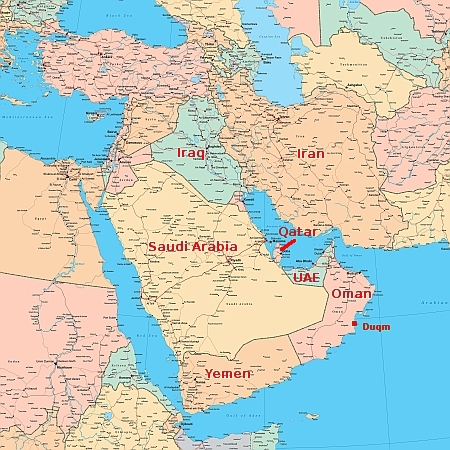Update on Vast’s space station plans

Haven-2 station once completed
Link here. The article provides a very detailed look at Vast’s short and long range plans, including its overall strategy to win NASA’s full space station construction contract by first building, launching, and occupying its small scale Haven-1 station and thus demonstrating it is the right company for NASA to finance its full scale Haven-2 rotating space station (shown in the graphic to the right).
The article notes that Vast intends to complete Haven-1’s primary structure in July, and do environmental and vibration ground testing from January to March 2026, with its planned launch on a Falcon 9 rocket in May 2026. Once launched it plans to put crews on board for a total of 30-days (though it is unclear at this moment whether that will be a single mission or a series of shorter flights).
In addition, the article reveals that the company also hopes to do two spin tests of Haven-1, testing its ability to rotate and create an artificial gravity. That aligns with the goal of Vast’s full scale Haven-2 station, which it wants to rotate as well. Since the plan is to assembly Haven-2 from upgraded Haven-1 modules, these spin tests are essential for proving the larger station’s design.
Based on this new information, I think we can now map out the evolving but still subject-to-change manned operations at Haven-1, comprising several short 3-5 day manned missions. The first will the crew test the module’s operation. The next two will be to do these spin tests, with people on board.
Vast’s strategy is fundamentally different than the other proposed stations (all listed below). Instead of taking a small NASA development grant to create designs on paper, it is spending its own money to actually launch a demonstration station. If successful, this strategy will make it very easy for NASA to pick it when the time comes to award the larger station construction contracts.
My present rankings for the four proposed commercial stations:
- Haven-1, being built by Vast, with no NASA funds. The company is moving fast, with Haven-1 to launch and be occupied in 2026 for an estimated 30 days total. It hopes this actual hardware and manned mission will put it in the lead to win NASA’s phase 2 contract, from which it will build its much larger mult-module Haven-2 station..
- Axiom, being built by Axiom, has launched three tourist flights to ISS, with a fourth scheduled for early June, carrying passengers from India, Hungary, and Poland. Though there have been rumors it has cash flow issues, development of its first module has been proceeding more or less as planned.
- Starlab, being built by a consortium led by Voyager Space, Airbus, and Northrop Grumman, with an extensive partnership agreement with the European Space Agency. It recently had its station design approved by NASA.
- Orbital Reef, being built by a consortium led by Blue Origin and Sierra Space. Overall, Blue Origin has built almost nothing, while Sierra Space has successfully tested its inflatable modules, including a full scale version, and appears ready to start building its module for launch.

Haven-2 station once completed
Link here. The article provides a very detailed look at Vast’s short and long range plans, including its overall strategy to win NASA’s full space station construction contract by first building, launching, and occupying its small scale Haven-1 station and thus demonstrating it is the right company for NASA to finance its full scale Haven-2 rotating space station (shown in the graphic to the right).
The article notes that Vast intends to complete Haven-1’s primary structure in July, and do environmental and vibration ground testing from January to March 2026, with its planned launch on a Falcon 9 rocket in May 2026. Once launched it plans to put crews on board for a total of 30-days (though it is unclear at this moment whether that will be a single mission or a series of shorter flights).
In addition, the article reveals that the company also hopes to do two spin tests of Haven-1, testing its ability to rotate and create an artificial gravity. That aligns with the goal of Vast’s full scale Haven-2 station, which it wants to rotate as well. Since the plan is to assembly Haven-2 from upgraded Haven-1 modules, these spin tests are essential for proving the larger station’s design.
Based on this new information, I think we can now map out the evolving but still subject-to-change manned operations at Haven-1, comprising several short 3-5 day manned missions. The first will the crew test the module’s operation. The next two will be to do these spin tests, with people on board.
Vast’s strategy is fundamentally different than the other proposed stations (all listed below). Instead of taking a small NASA development grant to create designs on paper, it is spending its own money to actually launch a demonstration station. If successful, this strategy will make it very easy for NASA to pick it when the time comes to award the larger station construction contracts.
My present rankings for the four proposed commercial stations:
- Haven-1, being built by Vast, with no NASA funds. The company is moving fast, with Haven-1 to launch and be occupied in 2026 for an estimated 30 days total. It hopes this actual hardware and manned mission will put it in the lead to win NASA’s phase 2 contract, from which it will build its much larger mult-module Haven-2 station..
- Axiom, being built by Axiom, has launched three tourist flights to ISS, with a fourth scheduled for early June, carrying passengers from India, Hungary, and Poland. Though there have been rumors it has cash flow issues, development of its first module has been proceeding more or less as planned.
- Starlab, being built by a consortium led by Voyager Space, Airbus, and Northrop Grumman, with an extensive partnership agreement with the European Space Agency. It recently had its station design approved by NASA.
- Orbital Reef, being built by a consortium led by Blue Origin and Sierra Space. Overall, Blue Origin has built almost nothing, while Sierra Space has successfully tested its inflatable modules, including a full scale version, and appears ready to start building its module for launch.






